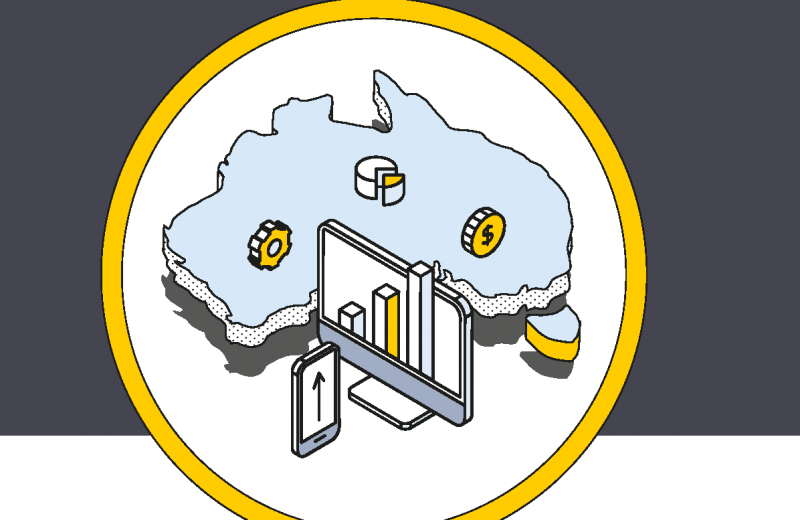The latest CommSec economic rankings reveal how the pandemic recession is hitting some states and territories harder than others.
Tasmania remains Australia’s best performing economy, with the ACT climbing into second place and Victoria slipping further behind, according to the latest CommSec State of the States report.
Using the latest available information, the CommSec State of the States report provides a valuable economic snapshot of how Australian state and territory economies are performing in the recession caused by the coronavirus pandemic.
The State of the States report is now in its 12th year, and for the first time Tasmania has topped the rankings for the third consecutive quarter. The Apple Isle now leads rankings on five of the eight indicators assessed. In the previous survey, three months ago, Tasmania took top spot from Victoria after sharing the mantle of top performing economy in the April report.
The ACT economy has now lifted to second position with Victoria slipping to third position. The second ranking for the ACT is its highest ranking in just over three years. And the third ranking for Victoria is its lowest position in just over three years.
NSW shares equal fourth spot with South Australia. Then in joint sixth position are Queensland and Western Australia and the Northern Territory. The joint fourth position for South Australia is its highest ranking in three years. And the joint sixth position for Western Australia is its highest ranking since April 2016.
CommSec Chief Economist Craig James said: “We continue to see compression in the rankings. The big improvers over the past quarter were the ACT, South Australia and Western Australia. The biggest losers were Victoria, NSW and Queensland.
“Based on the latest economic data readings, Victoria has potential to slip further down the performance rankings while Tasmania and the ACT consolidate positions in the top two spots. The other economy with momentum on its side at present is Western Australia, benefitting from faster population growth, solid mining activity and success at suppressing coronavirus cases.”
The latest State of the States report uses the most up-to-date economic data. While some data relates to the June quarter, other data – such as unemployment – is timelier, covering the month of September.
“The coronavirus crisis is causing mixed operating conditions across industries and across states and territories. A key factor driving the relative success in economic performance has been the relative success in suppressing the virus. Suppressing the virus increases mobility – allowing the re-opening of businesses and for workers to get back to work.
“Future reports will prove valuable as we track how each state and territory navigates the crisis, especially the recovery phase. State and territory governments have been active in providing stimulus and support measures for their economies. And the Federal Government and the Reserve Bank have provided significant broader nationwide support for business and consumers,” Mr James said.
State and territory highlights
- Tasmania is ranked first on relative population growth, equipment investment, housing finance, dwelling starts and retail trade. Tasmania ranks third or fourth on the other three indicators.
- The ACT has lifted from third to second position on the overall performance rankings. The ACT leads other economies on relative unemployment.
- Victoria is now in third position. Of the eight indicators, Victoria still ranks first on relative economic growth and construction work done. Victoria’s lowest ranking is fifth on four indicators: retail spending, equipment investment, relative population growth and relative unemployment.
- NSW ranks equal fourth on the economic performance rankings. NSW is second ranked on construction work but is now ranked eighth on relative unemployment.
- South Australia is now in equal fourth position on the economic performance rankings. South Australia is second ranked on relative population growth and third on relative unemployment.
- There is now little to separate NSW, South Australia, Queensland and Western Australia on the performance rankings.
- Queensland is now in joint sixth position on the performance rankings. Queensland is ranked second on retail trade and third on relative population growth.
- Western Australia has lifted from seventh to joint sixth position on the economic performance rankings and continues to edge away from eighth-ranked Northern Territory. Western Australia is ranked second on relative economic growth and third on equipment investment but is ranked seventh on four indicators.
- The Northern Territory is second ranked on relative unemployment and fifth-ranked on relative economic growth, but lags all of the other states and territories on the other six indicators.
Annual growth rates
Annual changes in economic indicators are useful for measuring economic momentum. On the eight indicators assessed Western Australia tops the annual changes on three measures. Economic momentum is on its side. All of the other economies except NSW and South Australia are on top for annual economic growth on one of five economic indicators.
Download the State of the States Report

